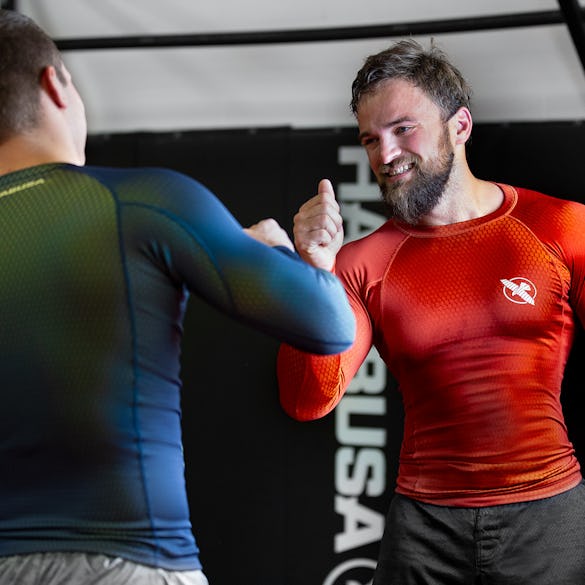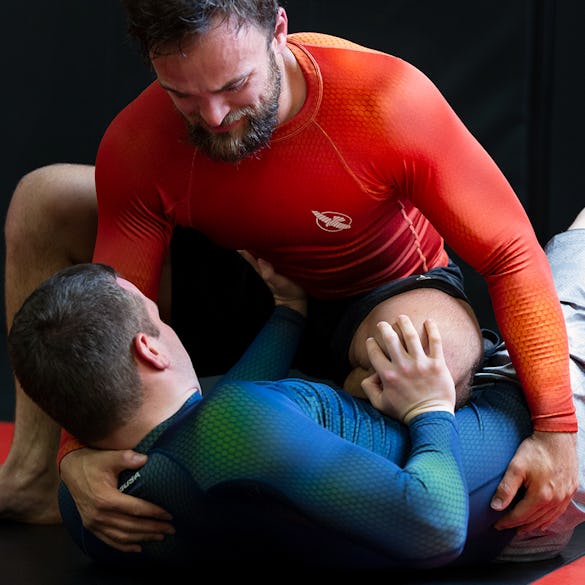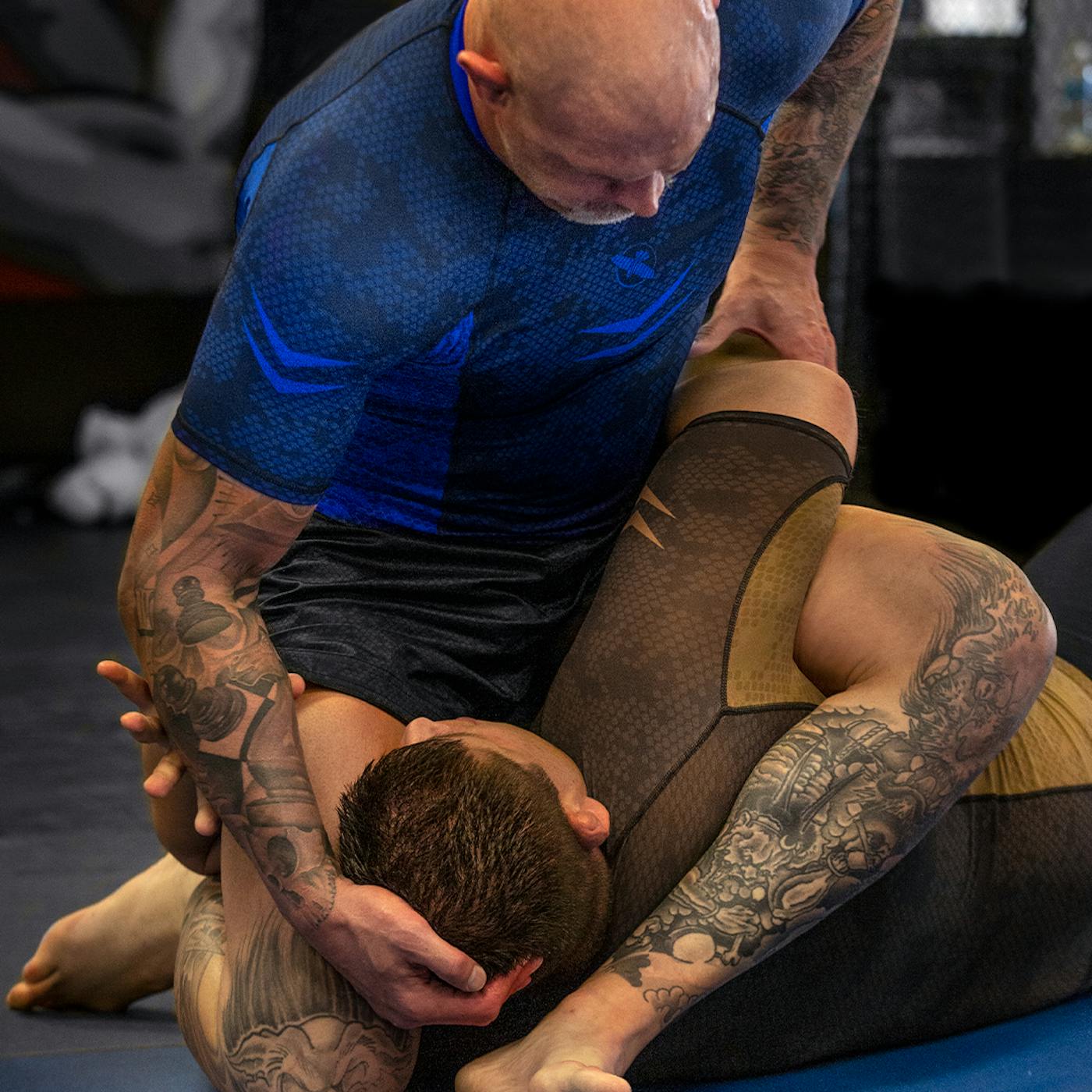Once the popularity of MMA fighters went mainstream in the early ‘90s, it garnered the interest in Brazilian jiu-jitsu (BJJ) for people all over the world. However, this type of martial art was developed much earlier in the 1920s.
Unlike other fighting styles that require punches and kicks, BJJ involves grappling close to the ground. There are two types of jiu-jitsu: gi and no gi, but is there a difference?
In this blog, we’ll break down what separates gi vs. no gi jiu-jitsu, including apparel requirements and fighting techniques, as we determine if one is better for self-defense than the other.
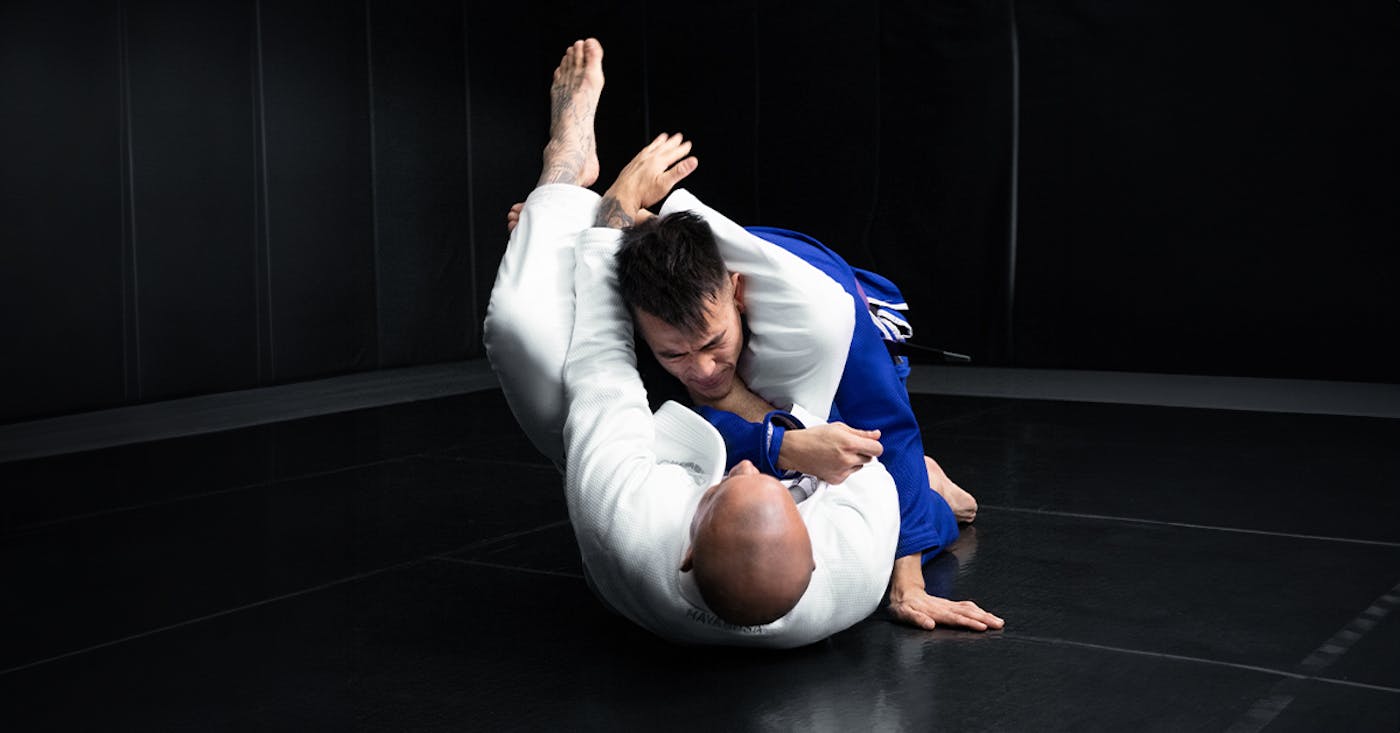
Differences Between Gi and No Gi Jiu-Jitsu
The main difference between the gi vs. no gi jiu-jitsu is the clothing. A gi is the traditional uniform worn during jiu-jitsu. The kimono-like jacket originates from Japan and is made with durable cotton and drawstring pants.
In Brazilian jiu-jitsu, the notable accessory is a cloth belt. This signifies a fighter’s rank based on color. For instance, white signifies a beginner while black is the highest rank.
However, in no gi BJJ, fighters don’t don this standard uniform. Instead, no gi jiu-jitsu gear includes rash guards when grappling to protect against mat burns. Compression shirts and other close-fitting apparel is also popular.
Due to the differences in clothing worn for gi vs. no-gi jiu-jitsu, there are rules regarding whether there can be clothing manipulation when fighting. In gi jiu-jitsu, the uniform is deemed part of the body. This means sleeves and pants can be grabbed and used as part of a fighter’s strategy.
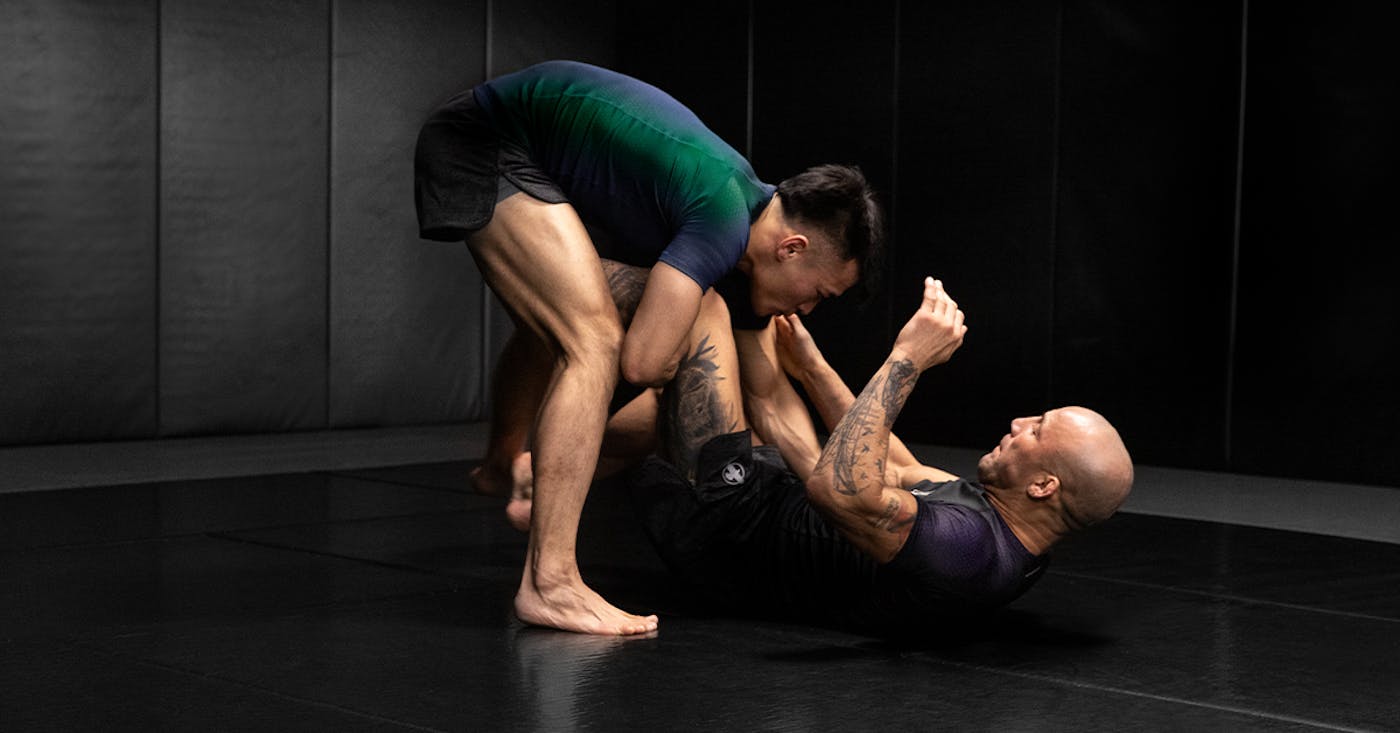
Learning Basic Gi and No Gi Jiu-Jitsu Techniques
Jiu-jitsu relies on body positioning and whether you are controlling or supporting an attack. In gi jiu-jitsu, there are additional control points by gaining a grip on the lapels or sleeves of the uniform.
One fundamental technique is the spider guard. This is when you control your opponent's arms using both your arms and legs. The move begins by grabbing the sleeve of the opponent's gi and placing the soles of the feet at the crease between their forearms and biceps.
Though most skills used in gi training can be applied in no gi jiu-jitsu, there’s not the control aspect through the clothing. Therefore, the pace is often faster, requiring agile movements and position dominance.
Leg locks and heel hooks are more commonplace in no gi, utilizing only the body without the accompaniment of any lapels, loose sleeves or pant legs.
Gear Up with Hayabusa’s Jiu-Jitsu Collections
Get in fight mode with the best BJJ gear for training and competition. The Hayabusa Jiu-Jitsu Collection has what you need to elevate your stance on the mat.
It doesn’t matter whether you’ve reached champion status or fall into the ranks of gi or no-gi BJJ for beginners, choose from a quality lineup of BJJ uniforms and no-gi rash guards.
Jiu-Jitsu Gis
Hayabusa jiu-jitsu gis are available in various colors and styles, all which are IBJJF compliant for competition. The lightweight material is soft to the touch but constructed with reinforced lapels and ripstop pants for maximum durability.
The Brazilian jiu-jitsu gi material is pre-treated to prevent color fade, and the drawstring creates a customizable fit. Confidence is key when preparing for a fight and having the right “armor” prepares you well for any battle.
Hayabusa Lightweight Jiu-Jitsu Gi

Hayabusa Goorudo 3 Gold Weave Jiu Jitsu Gi

Hayabusa Ascend Lightweight Jiu Jitsu Gi

Hayabusa Warrior Gold Weave Jiu Jitsu Gi

No-Gi Rash Guards
When uniforms aren’t required, fighters still need protection when maneuvering through holds and submissions on the mat. The No-Gi Jiu-Jitsu Collection includes both long sleeve and short sleeve BJJ rash guard, which provide the ultimate in comfort, agility, and protection.
Made with a premium, four-way stretch material and reinforced stitching, the rash guards wick away moisture, help with body temperature control, and eliminate chafing to promote elite performance.
Hayabusa Fusion Long Sleeve Rash Guard

Hayabusa Geo Short Sleeve Rash Guard

Hayabusa Geo Long Sleeve Rash Guard

Hayabusa Geo Vale Tudo Shorts

Benefit of Adding Jiu-Jitsu to Your Training Rotation
In the end, the battle of gi vs. no-gi jiu-jitsu for self-defense ends in a tie. Both are valuable and provide similar benefits.
Regardless of whether you train wearing a Hayabusa gi or not, BJJ is a martial art that helps with agility, strength, and building self-confidence. As you become skilled in different techniques and go up against different opponents, you’ll learn to trust your body and anticipate the moves of others.
Like other martial arts, BJJ involves offensive strategies. But it also requires knowing how to catch your opponent off guard or at least put a leg up on your positioning over them.
Train hard, and find the support you need from top tier jiu-jitsu apparel, gear, and equipment. Find out why fighters credit Hayabusa with having the best BJJ gis and no-gi clothing available.
